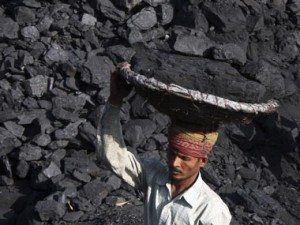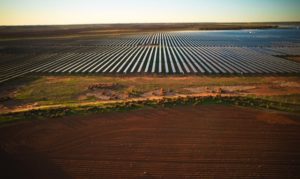Another week, another couple of nails hammered into the coffin for the Australian coal mining and export plans of Indian conglomerate, Adani Group.
The first came with the news on Monday night that Standard Chartered – one of the largest investment banks in the UK – has become the latest international financier to withdraw its support for the development of one of the largest new coal mines in the Southern Hemisphere, in Queensland’s Galilee Basin.
In a statement released on Monday, Standard Chartered said both parties – the bank and Adani – had agreed to end the bank’s role in the Carmichael coal mine after an ongoing review of its feasibility and delays experienced by Adani in getting project approvals.

Last week, the project’s prospects received a major blow when the federal government’s environmental approval of the coal mine was overturned by the Federal Court last week, after it ruled that environment minister, Greg Hunt, had failed in his duty to assess all risks to endangered wildlife.
This week, the second nail – and arguably, the far more serious threat to Adani’s mega-coal mine development – comes in a new report from the Institute for Energy Economics and Financial Analysis, which predicts a rapid decline in coal imports to India – 20 per cent a year, effectively starting now – due largely to a changing energy market where new solar generation is already cheaper than that from coal.
There IEEFA report notes that the tariffs agreed for solar in the July 2015 Telangana and Madhya Pradesh state solar tenders were around 1 rupee/kWh cheaper than electricity from imported thermal coal and fixed for 25 years, which would result in a considerable deflationary impact.
“With falling prices of solar, imported coal has become the most expensive source of incremental electricity generation,” said Jai Sharda, the report co author and a financial expert from Equatorial research.

The installation of 175GW of renewable energy – equivalent to three times the electricity capacity of Australia – is one of a number of key policy initiatives that will enable the rapid transformation.
“As momentum builds, the Indian electricity market is rapidly pivoting toward a significantly higher reliance on renewable energy and energy efficiency,” said Sharda.
In July alone, the IEEFA report notes, there have been eight major deals, with the single biggest international endorsement being SoftBanks’ $US20 billion, 20GW solar joint venture.
Facilitated by a $US50 billion grid upgrade, solar electricity is key, with IEEFA forecasting installs of 75GW by 2021/22 capable of delivering 110TWh, or 22 per cent of the required electricity increase.
“India is replicating Germany’s and China’s systematic electricity sector transformation, with the added advantage that the cost effectiveness of this is accentuated by the fact that the price of solar electricity has dropped by 80 per cent in five years,” said Tim Buckley, director of Energy Finance Studies at IEEFA.
“While many commodity forecasters have assumed Indian imports will continue to grow, as a result of the transformation, IEEFA forecasts a peak in Indian thermal coal imports in 2015, with a rapid ~20 per cent pa decline thereafter, says the report.
“The profound transformation announced in 2014 by the Indian government is gaining momentum,” said Buckley. “While most financial commentators have questioned India’s capacity to deliver, all sign are pointing towards success.”










